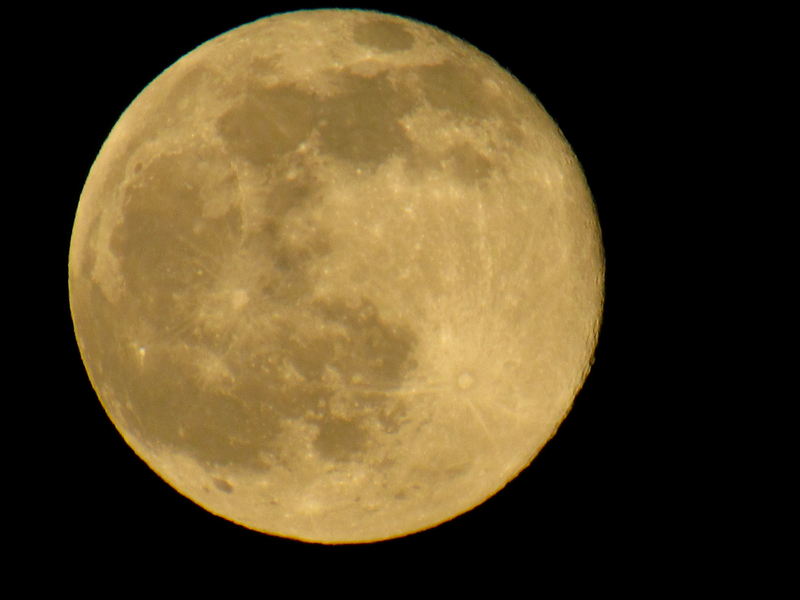
June 20, 2016, by Lindsay Brooke
Why is tonight’s full moon called a Strawberry Moon?
Want to know why tonight’s full moon is called a Strawberry Moon? Dr Julian Onions, who is studying galactic computer simulation in the School of Physics and Astronomy, has the answer.
Tonight (well strictly noon 12:02 June 20th if we’re going to be pedantic) the moon is full again. This happens about 12 and a bit times a year. The moon is bright in the sky when it is full, so it is a clear signal to see. For this reason alone, full moons were quite a key marker throughout history as a natural seasonal clock. It would only be natural to name some of these significant ones. You may well have heard of the “Harvest Moon” which occurs in the Autumn, and was supposed to allow extra light to gather in the harvest. It has also been the subject of some popular songs.
The Strawberry Moon is named after this time of year when the strawberries are in season and ready to be picked. It is a native American Indian Algonquin tribe term that has been adopted – although not as successfully as ones like Harvest or Hunters moon. The Algonquin had names for all the full moons, with some of the less popular ones being “Worm Moon” (when the ground softens enough for worms to appear), and an eponymous “Sprouting Grass Moon”.
This year the “Strawberry Moon” also happens to coincide roughly with the summer solstice (which occurs at 22:34 June 20th) – the day of the year when the Sun appears at its highest in the sky. It comes from the Latin sol (Sun) sistere (to stand still) as if you were watch its maximum height through the year, it would appear to stop rising, stand still and then start descending. There is no particular significance to this other than again an alignment of two natural cycles that are bound to coincide now and again.
There has been some suggestion that the moon might appear pink in keeping with the name. However outside of anomalous atmospheric effects it will appear much the same colour as any other time. Although if you happen to see it just as it rises or sets, it can appear quite red, which is just the effect of its light passing through a lot of atmosphere and applies to pretty much all objects viewed like that, including the Sun.
There is also the term blue moon, which refers to the 13th full moon in a year (amongst other definitions), which occurs occasionally if the cycle happens to align with the calendar in just the right way. The moon can appear blue in a few cases naturally though, again due to atmospheric processes. Massive forest fires and volcanic eruptions can put enough tiny particles into the atmosphere to cause it to appear blue, thus complicating the term. Krakatoa, Mount St Helens and Mount Pinatubo volcanic eruptions have all lead to a visible bluing of the moon.
So if tonight – by some miracle – the skies are clear and you see the moon, expect it to look much like any other full moon, but do treat yourself to a punnet of strawberries!
No comments yet, fill out a comment to be the first

Leave a Reply